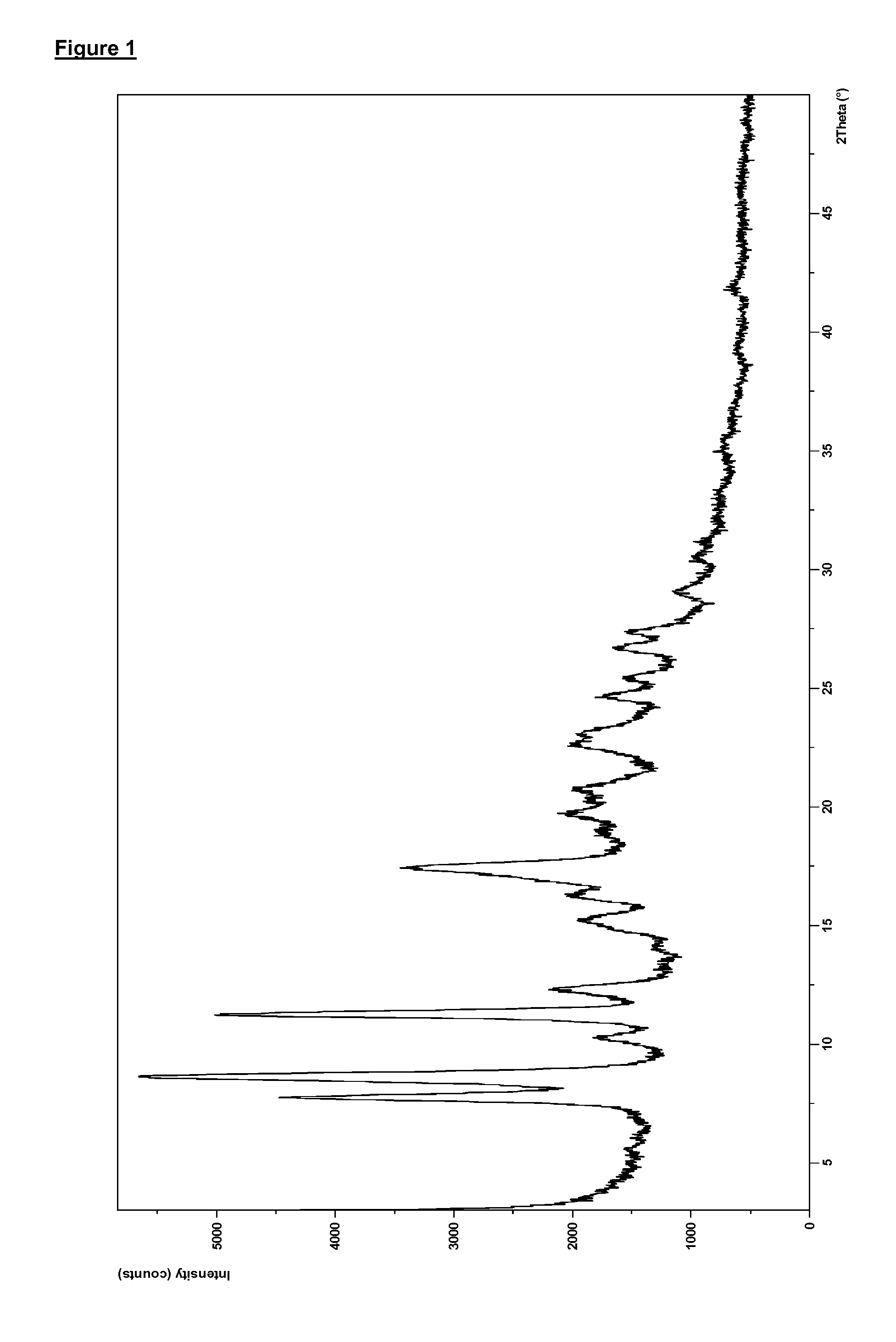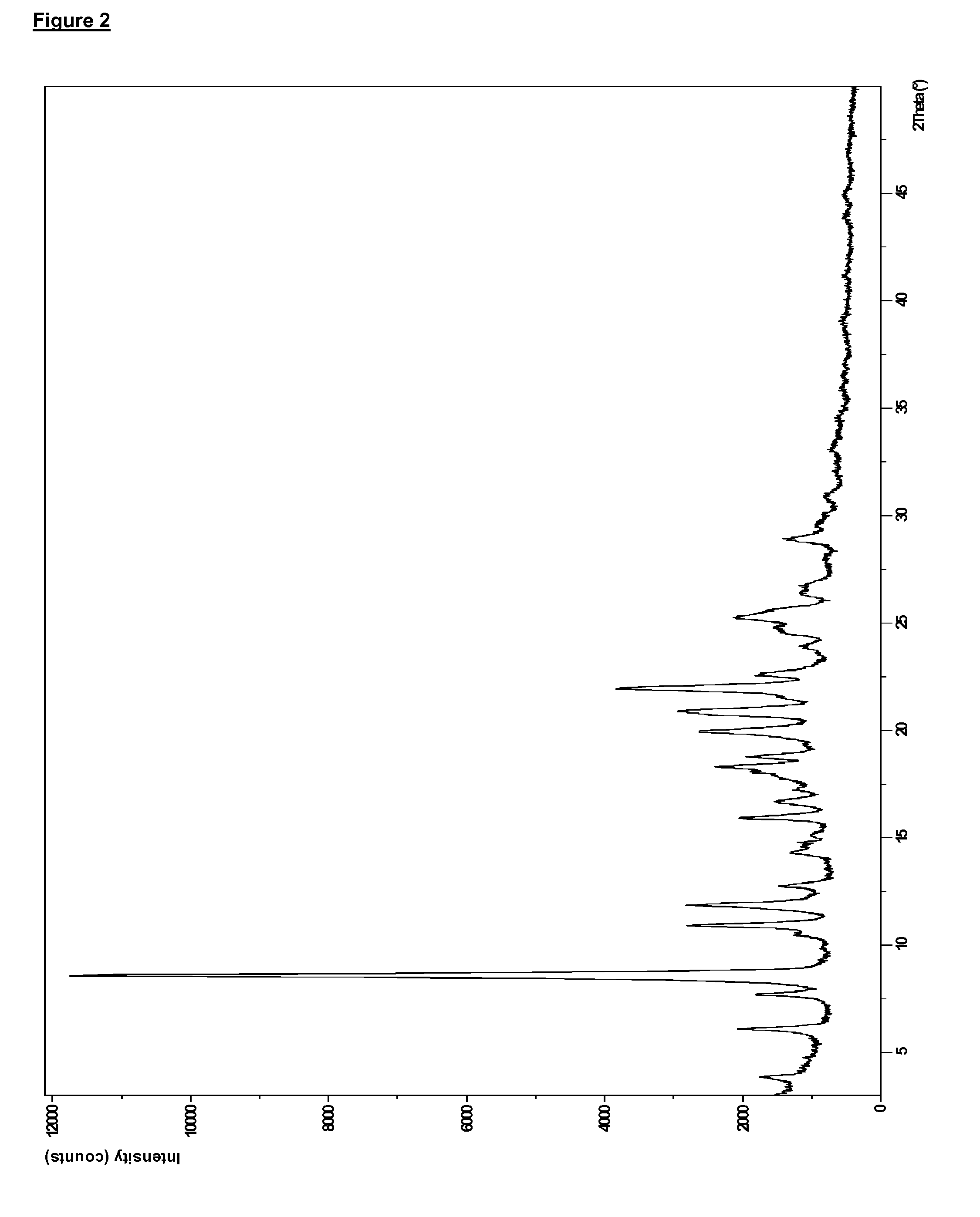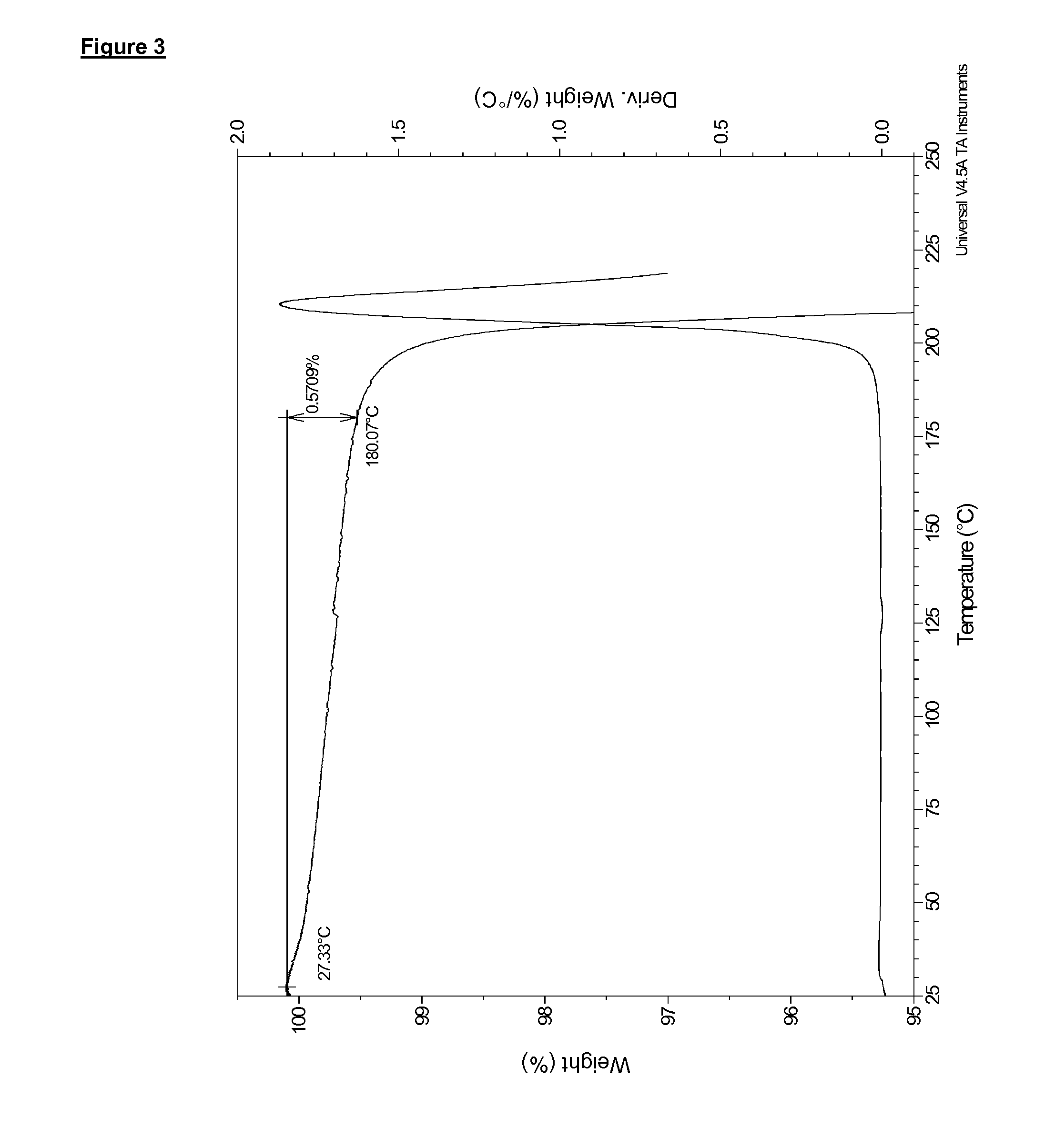1-pyrazolyl-3-(4-((2-anilinopyrimidin-4-yl)oxy)napththalen-1-yl) ureas as p38 MAP kinase inhibitors
a technology of pyrazolyl and urea, which is applied in the direction of extracellular fluid disorder, immunological disorder, metabolism disorder, etc., can solve the problems of multiple off-target effects, high toxicity, and the discontinuation of the development of a substantial number of inhibitors, and achieves the effect of increasing cell viability
- Summary
- Abstract
- Description
- Claims
- Application Information
AI Technical Summary
Problems solved by technology
Method used
Image
Examples
example 1
Preparation of Compound (I)
[0229]The following intermediates used to prepare Compound (I) of the invention have been previously described and were prepared using the procedures contained in the references cited below (Table 3).
[0230]
TABLE 3Previously Described Intermediates.IntermediateStructureName, LCMS Data and ReferenceA3-tert-butyl-1-p-tolyl- 1H-pyrazol-5-amine. Rt 2.46 min (Method 1 basic); m / z 230 (M + H)+, (ES+). Cirillo, P. F. et al., WO 2000 / 43384, 27 Jul 2000. B4-((2-chloropyrimidin-4- yl)oxy)naphthalen-1-amine. Rt 1.80 min (Method 2); m / z 272 / 274 (M + H)+, (ES+). Cirillo, P. F. et al., WO 2002 / 92576, 21 Nov 2000.
Intermediate C: 4-((4-Aminonaphthalen-1-yl)oxy)-N-phenylpyrimidin-2-amine
[0231]
[0232]To a nitrogen purged solution of mixture of Intermediate B (50.0 g, 184 mmol) and aniline (42.0 mL, 460 mmol) in THF (200 mL) was added pTSA (17.5 g, 92.0 mmol) in a single portion. The reaction mixture was heated to 70° C. for 1.5 hr during which time which a precipitate fo...
example 2
Summary of In Vitro and In Vivo Screening Results
[0235]The in vitro profile of Compound (I) disclosed herein, as determined using the protocols described above, are presented below (Tables 4a-f) in comparison with a structurally related Reference Compound which is N-(4-(4-(3-(3-tert-butyl-1-p-tolyl-1H-pyrazol-5-yl)ureido) naphthalen-1-yloxy)pyridin-2-yl)-2-methoxyacetamide, which has been previously described as a potent anti-inflammatory agent with anti-viral activity (Ito, K. et al., WO 2010 / 112936, PCT / GB2010 / 050575, 7 Oct. 2010 and Ito, K. et al., WO 2010 / 067130, PCT / GB2009 / 051702, 17 Jun. 2010.
[0236]The compound of the present invention demonstrates a very similar inhibitory profile to the Reference Compound in the range of kinase enzyme assays with the marked exception of the inhibitory activity of Compound (I) against the enzyme GSK3α, which is very much weaker than the Reference Compound (Table 4a).
[0237]
TABLE 4ap38 MAPK, c-Src, Syk and GSK3 α Enzyme Profile of Compound (I)T...
example 3
Preparation of Compound (I) as the Anhydrous Free Base in Solid, Crystalline, Polymorphic Form B
[0255]Compound (I) (398 g, in polymorphic form A) was taken up in acetone (3.98 L) and the solution heated to 50° C. NORIT A SUPRA (19.9 g, an activated carbon) and diatomaceous earth, flux-calcined (3.98 g; a filter agent) were then added and the mixture was heated to reflux (56° C.) for 15 min. The mixture was filtered and the resulting solid was washed with acetone (100 mL). The combined filtrate and washing acetone was warmed to reflux (56° C.), and 900 mL of solvent was removed via distillation under atmospheric pressure at 56° C. The mixture was cooled to 50° C. and water (398 mL) was then added over a period of 1 hr whilst the temperature was maintained at 50° C. After an additional 30 min at 50° C. the heterogeneous mixture was cooled to 20° C. over 6 h and then stirred at 20° C. for 10 hr. The resulting product was filtered and the cake was washed with acetone (318 mL). The produ...
PUM
 Login to View More
Login to View More Abstract
Description
Claims
Application Information
 Login to View More
Login to View More - R&D
- Intellectual Property
- Life Sciences
- Materials
- Tech Scout
- Unparalleled Data Quality
- Higher Quality Content
- 60% Fewer Hallucinations
Browse by: Latest US Patents, China's latest patents, Technical Efficacy Thesaurus, Application Domain, Technology Topic, Popular Technical Reports.
© 2025 PatSnap. All rights reserved.Legal|Privacy policy|Modern Slavery Act Transparency Statement|Sitemap|About US| Contact US: help@patsnap.com



